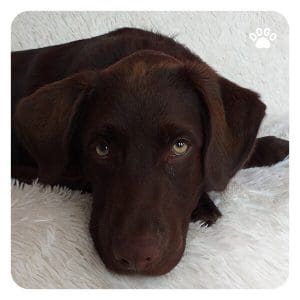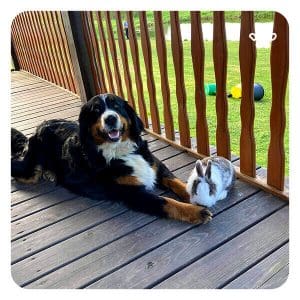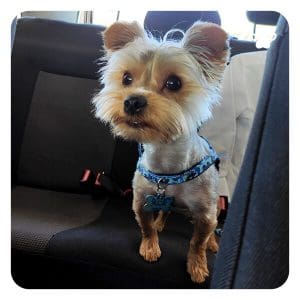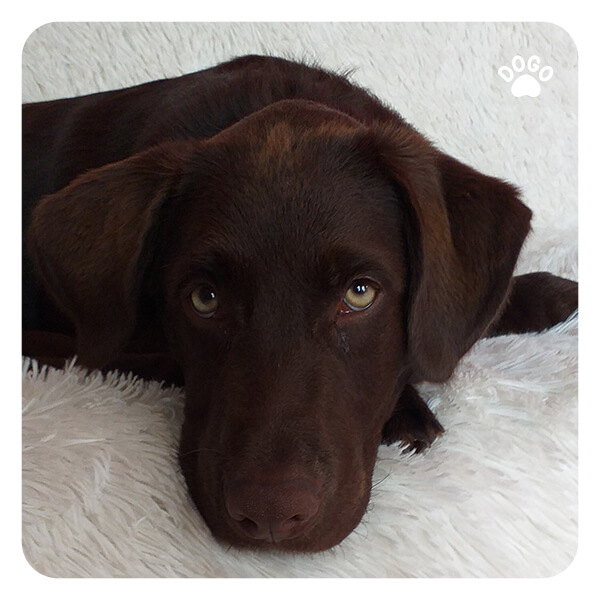 Are you worried your dog may have missed out on proper socialization? For example, your dog may have had medical issues that prevented them from socializing, or perhaps you recently rescued an adult dog that lived through a traumatic past life. Or has the recent Covid-19 pandemic affected your dog from not having the opportunity to socialize with people and dogs? You may have even taken your dog to socialization settings as a puppy, but they still turned out to be fearful. Some dogs have a genetic predisposition to being shy and anxious even when socialized as a pup.
Are you worried your dog may have missed out on proper socialization? For example, your dog may have had medical issues that prevented them from socializing, or perhaps you recently rescued an adult dog that lived through a traumatic past life. Or has the recent Covid-19 pandemic affected your dog from not having the opportunity to socialize with people and dogs? You may have even taken your dog to socialization settings as a puppy, but they still turned out to be fearful. Some dogs have a genetic predisposition to being shy and anxious even when socialized as a pup.
Whatever the reason is, one thing for sure is don’t fret! It is never too late to introduce the world to your adult dog. When teaching your dog that the world is non-threatening and not scary, the primary key factor is that you will need to train and work slowly. Be patient, kind, positive, and understanding with your dog.
What are Socialization and Habituation?
Socialization is the process of making your dog friendly with people, animals, and places. It is important that your dog is familiar with your family members and all people, such as men or children. It is also essential to teach your dog to be friendly with other dogs and animals on the street. Habituation is the process of making your dog comfortable around different stimuli such as sights, sounds, smells, and experiences. The last thing you want to experience is to have an under-socialized adult dog that is resorting to problems such as fighting, biting, or barking.
It’s also important to remember that not all dogs will get along. Some dogs may have had negative experiences with other dogs in the past and may be fearful or aggressive towards them. In these cases, it’s important to work with a professional dog trainer or behaviorist to help your dog overcome their fear or aggression. Additionally, habituation training can be especially important for dogs that are easily frightened by loud noises or unfamiliar smells. By gradually exposing your dog to these stimuli in a controlled environment, you can help them become more comfortable and less anxious in new situations.
Checklist
Start observing and recording a socialization and habituation checklist of what your dog is comfortable and not comfortable with and work on it slowly.
Socialization Checklist
1. People
- Family
- Friends
- Unfamiliar people, visitors, and strangers such as men, tall men, men with beards, men with deep voices, women, people of many ethnicities, elderly, people in uniform, people wearing hats or helmets, people wearing boots, people wearing hoodies, people wearing sunglasses, people carrying umbrellas, people carrying bags, people carrying balloons, people in costumes, people in the street, people in wheelchairs or using canes and walkers, people on bicycles and skateboards, people who walk slow or run fast, and children.
2. Animals
 Dogs
Dogs- Cats
- Horses
- Livestock
- Other animals you have in the home such as hamsters, rabbits, rats, birds, reptiles.
3. Places
- Veterinarian office
- Pet grooming salon
- Pet-friendly stores
- Dog-training schools
- Suburban neighborhood
- Shopping mall
- Home good stores
- Beaches
- Family and friends’ homes
- Parks
- Public transportation
Habituation Checklist
1. Sounds
 Thunder
Thunder- Fireworks
- Vacuum cleaner
- Siren such as ambulances, fire trucks, police
- Alarm
- Cars and traffic
- Car door slamming
- Pots and pans
- Doorbells
- Knocking at the door
- Hairdryers
- Lawnmowers
- Radio and television
- People talking loudly or yelling
2. Smells
- Exposure to all different scents, including odd scents
3. Surfaces
- Grass
- Hardwood
- Tile
- Sand
- Carpet
- Stairs
- Escalators and elevators
- Gravel
- Metal surfaces such as grates
- Ramps
- Veterinary scale
- Slippery floors
- Ice
- Mud
Small Steps Produces Results
One of the most important things to keep in mind when socializing an adult dog is to be consistent with your training. Consistency is key when it comes to teaching your dog new behaviors and habits. Make sure to set aside time each day to work on socialization and habituation training with your dog.
Taking baby steps into introducing your dog to specific socialization and habituation settings will produce faster results than speeding up the process. You do not want flooding to occur, which is a psychological term to descrsing a dog to whatever they are afraid of until the dog no longer responds to it. Suppose your dog is scared or nervous around other dogs, rather than sending them to a daycare full of dogs with all different temperaments. In that case, it is better to introduce one dog at a time. It would be the same scenario as putting someone who has Ophidiophobia (fear of snakes) in an enclosed room filled with snakes. The experience would be traumatizing for this person, like the shy dog placed in a busy doggie daycare center.
 Work at a pace your dog can handle. The slower you go, the faster results you will have. For example, if your dog is fearful of children, you can start to invite family or friends that have children over to your home. Have the child stay away at a far distance while your dog observes the child. Praise and reward your dog with their favorite treat or toy if they remain calm even for a split second! You want to create the experience to be fun and positive by teaching your dog that the sight of a child means a positive association.
Work at a pace your dog can handle. The slower you go, the faster results you will have. For example, if your dog is fearful of children, you can start to invite family or friends that have children over to your home. Have the child stay away at a far distance while your dog observes the child. Praise and reward your dog with their favorite treat or toy if they remain calm even for a split second! You want to create the experience to be fun and positive by teaching your dog that the sight of a child means a positive association.
If your dog is fearful of other dogs, make plans to go for a walk with a family member, friend, or neighbor who has a kind, calm, friendly, and well-mannered dog. Keep leashes loose for both dogs and keep the interactions and sessions short (approximately a total session of 15 minutes). If there is tension on the leash, recall your dog back to you and redirect their energy on turning around and walking forward. If your dog is showing loose body language and a wagging tail to be around the other dog, try to let them have some off-leash play in a fenced-in yard where you can control the situation to separate and end the play if necessary.
Another way to get your dog to be more comfortable around dogs is to let them observe dogs playing at a dog park at a far distance. Gradually, let your dog walk up to the fence and sniff. If your dog remains calm, give high-value treats to create a positive association.
It’s important to remember that every dog is different and will have their own unique set of fears and anxieties. Some dogs may be more easily overwhelmed than others and may require more time and patience when it comes to socialization and habituation training. If you’re unsure where to start, consider working with a professional dog trainer or behaviorist who can help you develop a customized training plan for your dog. Remember to always go at your dog’s pace and never force them into a situation that makes them uncomfortable. With time and patience, your dog will learn to trust and feel comfortable in new situations, making them a happier and more well-adjusted member of your family.
Read Your Dog’s Body Language
Make sure you understand your dog’s body language. Under-socialized dogs can be shy, anxious, fearful, nervous, and in some cases, it can lead to aggression. Therefore, if your dog shows any signs of stress and anxiety during your socialization sessions, it is essential to not reinforce the fear by staying calm and relaxed.
Explore The World With Your Dog
Every dog does not have to be in love with everybody, every dog, and everything. What matters the most is that your dog feels comfortable, safe, and secure in their everyday life and environment. Your dedication, confident energy, and positive encouragement will make your dog develop into a well-behaved, happy dog! The benefit is that you and your dog can travel anywhere together, take long walks, and get to hang out at dog-friendly parks and restaurants!
[/fusion_text]



